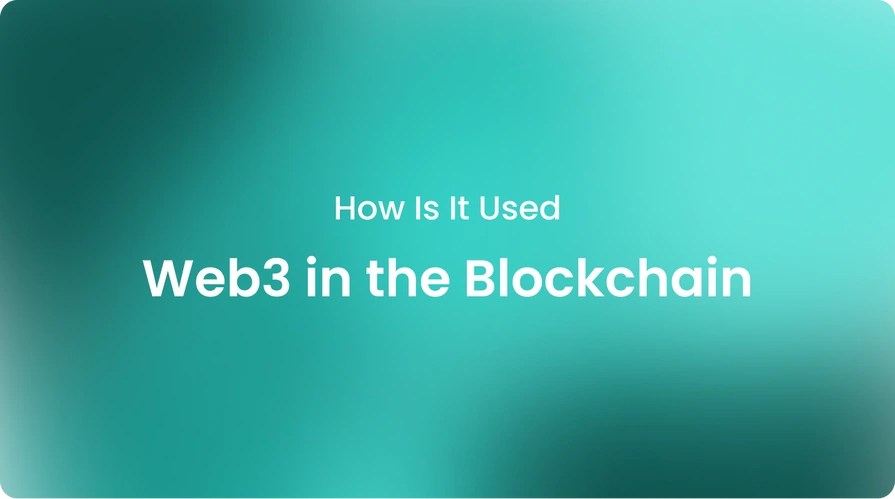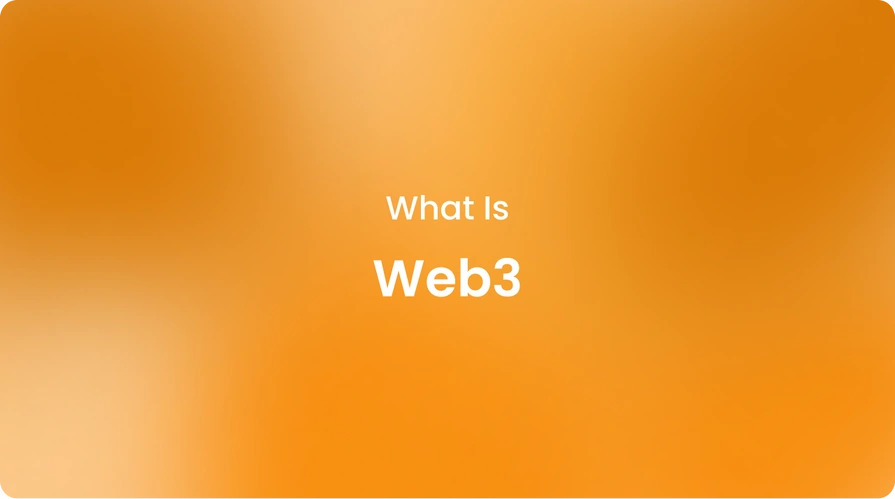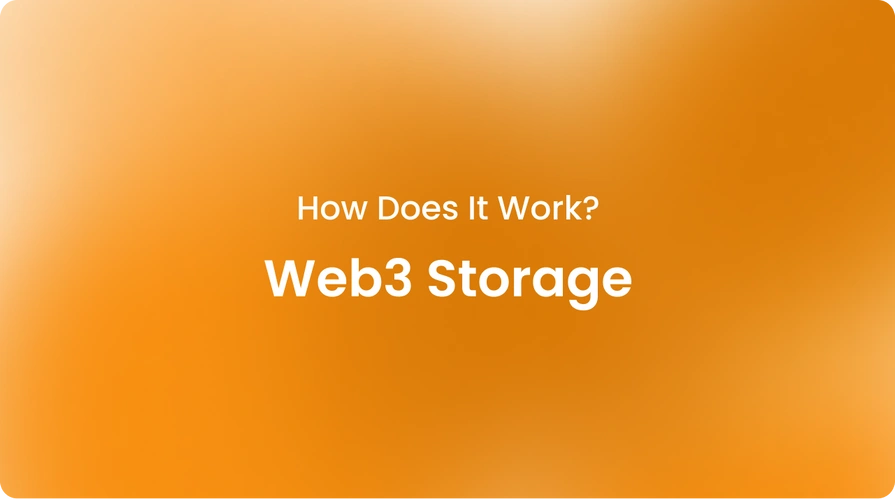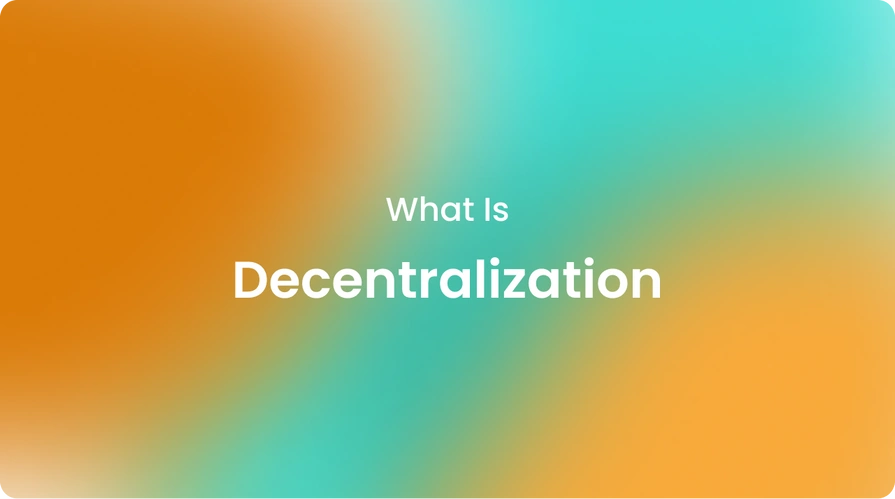|knowledgehub, technology
How Is Web3 Used in the Blockchain?

The nascent yet rapidly evolving landscape of Web3 presents an immense opportunity to reshape how we interact with technology and one another online, but how is Web3 used in the blockchain? Join us in this blog to find out the answer and more details about this innovative ecosystem. Let’s start!
Web3 leverages blockchain technology to decentralize the internet and empower users with more control over their data and digital experiences. While still in its early stages, this new paradigm holds enormous promise to not only enhance existing business models but spawn entirely new ones as well.
Blockchain, often referred to as the 'backbone' of Web3, is a distributed digital ledger that records transactions in a verifiable and permanent way. Blockchain enables Web3's vision, and forward-thinking companies can start leveraging this innovative space.
Unlike traditional databases centrally controlled by a single entity, blockchains have no single point of failure, making the data stored on them highly secure and tamper-proof.
Each "block" contains a cryptographic hash of the previous block, transaction data, and a timestamp, chaining them together in chronological order across a peer-to-peer network.
This allows for the decentralized storage of data without a middleman. In Web3 contexts, blockchains typically underpin digital assets and serve as the infrastructure enabling new models of creator monetization and interoperable workflows across platforms.
For example, non-fungible tokens (NFTs) leverage the blockchain to certify the provenance and scarcity of digital creations in an open marketplace not controlled by any single company.
What is blockchain?
A blockchain is a distributed system of digital ledger of transactions that computer systems on the blockchain duplicate and share across the entire network.
Each "block" records some or all of the recent transactions, cryptographically linked to the previous block to help secure the entire chain going back to the original block. This decentralized nature provides transparency to all users on the network as to the complete transaction history.
How does blockchain work?
When a transaction occurs, such as someone sending cryptocurrency to a friend, it gets broadcasted to the P2P blockchain network. Miners on the network validate the transaction using complex cryptographic algorithms and record it in a new block.
As more transactions are added and more blocks are chained together, the older blocks become more secure. Consensus across the decentralized network confirms the validity of transactions.
Advantages and disadvantages of blockchain
Blockchain offers several advantages, like increased security through decentralization and cryptography. It removes middlemen, enabling direct peer-to-peer value transfers without central intermediaries taking a cut.
Blockchain's distributed nature also gives it 100% uptime reliability and resilience against data loss. However, blockchain does have challenges as well, such as inefficiency resulting from verification redundancies across blockchain nodes.
Scalability issues also arise, given computational demands. Regulatory hurdles exist around using public blockchains for native crypto tokens or security tokens. Environmental costs are also high due to heavy crypto mining resource usage on some proof-of-work blockchains.
What is Web3?
Web3, sometimes called the new decentralized internet, represents an emerging version of the world wide web built on blockchain technology instead of being centralized under the control of big tech companies and governments.
It aims to give users back control of their data and digital assets through decentralization. Peer-to-peer networks powered by crypto tokens and blockchain run decentralized applications in Web3, giving users back control of their data and digital assets instead of existing under corporate ownership.
This independence from any centralized party is what differentiates Web3 from the current Web2 model and the initial Web1 era, which only published read-only web pages.
How does Web3 work?
In Web3, blockchain networks function as the decentralized foundation powering applications, digital assets, identity systems, and more.
Users can own their data, securely interact without intermediaries using cryptographic identities, and participate in new business models thanks to tools like NFTs, decentralized applications, and protocols.
Web3 is developing a future where online interactions will be tokenized, interoperable across systems, and give users a digital livelihood over their online activity and data.
You can check out “Tokens and Tokenization," “Tokenized Payment," “Asset Tokenization," and “Tokenization in Digital Banking” to learn more about tokenization.
Additionally, you can invest in tokenization directly through Cryptobunq, a one-stop-shop crypto service provider. CBQ provides many secure blockchain and Web3 solutions for you and your business, from node as a service to exchange APIs. Make sure to read our case studies to explore our expertise!
Advantages and disadvantages of Web3
Web3 promises to decentralize the internet, but challenges remain around scalability, usability, and incentivizing participation without rewards. Other concerns involve potential centralization risks, depending on how protocols evolve over time.
Supporters argue Web3.0 can mitigate issues like data and platform control, with the risk of new problems emerging as this nascent technology matures. Its long-term impacts also depend on how policies shape the ecosystem.
Now that we've covered blockchain and Web3 fundamentals, let's dive into their relationship and the role of blockchain in empowering the decentralized vision of Web3!
What is the relationship between Web3, blockchain, and cryptocurrencies?
Blockchain acts as the decentralized base layer infrastructure, enabling the shift towards Web3. It allows for the development of user-owned applications, marketplaces, crypto payment rails, and more through protocols that run atop blockchain networks.
Cryptocurrencies also play a role by facilitating trustless value transfers within these next-gen systems without centralized intermediaries.
For example, instead of Facebook owning your profile data and interactions, a user could own their digital identity, social interactions, and data as non-fungible tokens on a decentralized social network powered by a blockchain.
Payments for services could happen directly between individuals or businesses using cryptocurrencies instead of going through centralized platforms that take cuts. The overall goal is an internet where users have sovereignty over their digital experience. Therefore, they work together to make it happen.
Why is blockchain important in Web3?
Blockchain delivers key qualities that address the limitations of today's centralized systems and make the decentralized web possible. Its distributed nature provides internet-level resilience without single points of failure.
Transparent, immutable records also establish trust where none previously existed between parties that don't know each other.
Along with tools like smart contracts, blockchain enables new peer-to-peer business models without intermediaries by directly connecting supply and demand through open protocols. The result is a more distributed, fair, and robust infrastructure for the future internet.
How can companies use Web3?
Forward-looking enterprises are already exploring Web3 applications to enhance their businesses and customer relationships.
Some examples include auctioning exclusive experiences as NFTs, tokenizing loyalty points that fans can earn and trade, issuing digital currencies for in-game items and services, building decentralized marketplaces, or using smart contracts for supply chain management and other processes.
You can check out “Blockchain in Supply Chain” and “Features of Blockchain That Support Sustainability Efforts” to see how far these technologies go and how they transform our daily lives from efficiency to sustainability.
In this new paradigm, businesses have a chance to deepen user engagement, streamline operations, and open new revenue streams by leveraging the transparent, trustless nature of Web3 and blockchain technology.
A great example is Cryptobunq, a crypto-friendly digital bank offering various services in crypto and blockchain. Cryptobunq offers custody and wallet, batch payments, checkout and invoicing, and many more blockchain services for enterprises ready to embrace Web3 opportunities.
You can easily integrate the crypto services of CBQ into your business and become a business that is ready for the digital transformation that comes with Web3 and blockchain technologies. Adapt your business into the future with Cryptobunq!
The bottom line
Web3 and blockchain technologies are reworking the foundations of the internet through decentralized protocols that put ownership and value back into users' hands. Though challenges remain, the current landscape points to increased mainstream adoption of blockchain use-cases and cryptocurrencies.
Forward-thinking businesses are already leveraging Web3 to engage digital audiences in new ways. The rise of blockchain-based technologies like those provided by Cryptobunq highlights the key role distributed ledgers play in empowering this emerging paradigm shift.
If you also want to be ready for the future and become one of the forward-thinking businesses that have already started to benefit from the advantages Web3 and blockchain technology provide, contact us today. The future awaits you!













